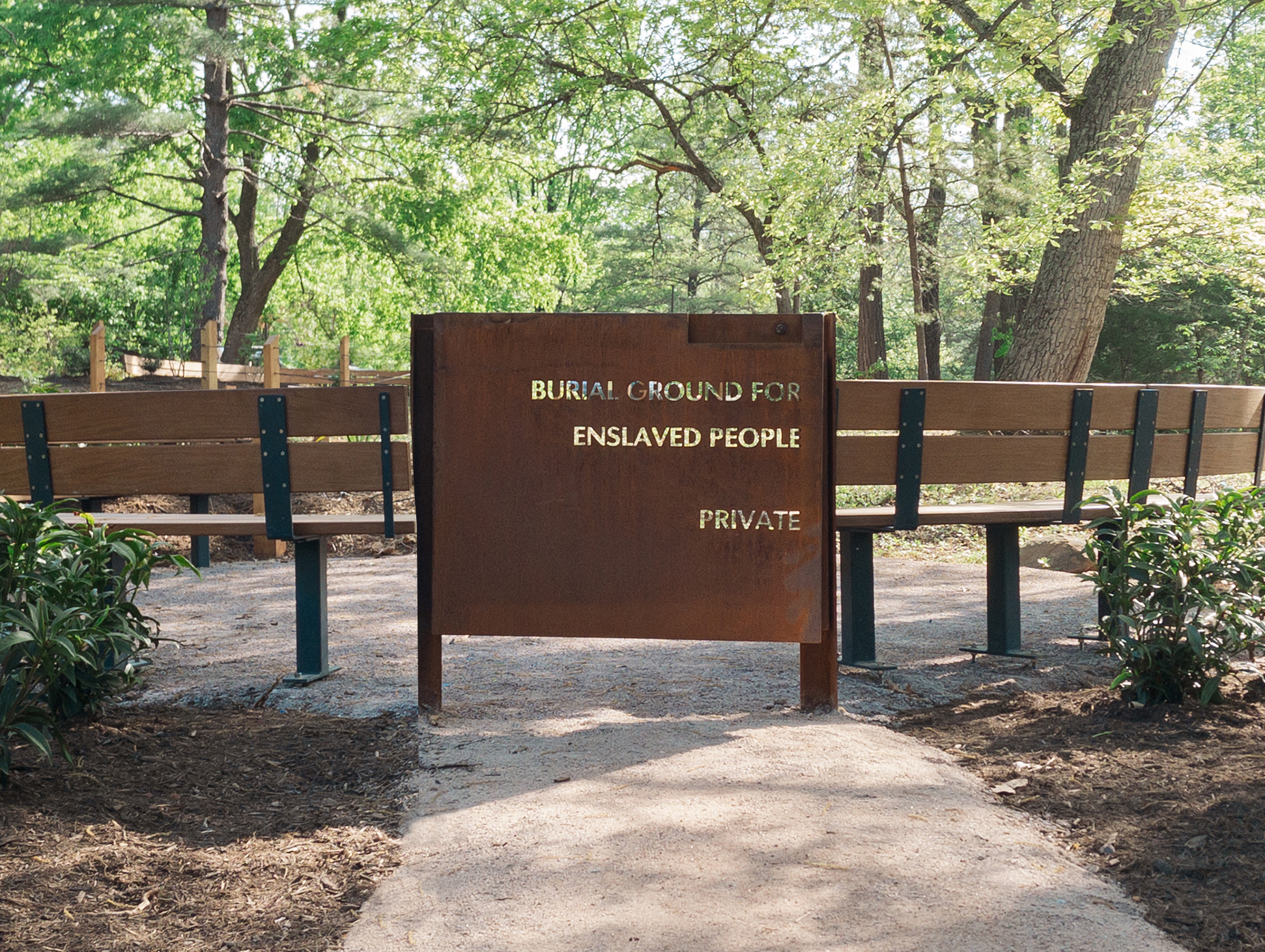“When we came from Virginia we brought one daughter with us, leaving the dust of a son in the soil near Monticello.”
–Madison Hemings, 1873
The Burial Ground for Enslaved People affords an opportunity for honoring and reflecting on the over 400 enslaved people who lived and labored at Monticello during Thomas Jefferson's lifetime. This burial ground, which holds over 40 graves and was likely used beginning in the eighteenth century, was dedicated in 2001 in a ceremony featuring remarks from NAACP President Julian Bond.
Led by guidance of the Getting Word Advisory Committee, a group of descendants representing the interests of multiple families enslaved on this plantation, Monticello embarked on a new initiative to better honor and protect the solemnity of this site in 2018. Completed in 2022, this project introduced more accessible pathways, new plantings, dedicated parking for descendants, additional seating, and new signage.

With descendants from all over the country in attendance, Monticello hosted a private rededication ceremony at the Burial Ground for Enslaved People in June 2022.
History of the Site
Almost four hundred persons lived in slavery at Monticello over a sixty-year-period, and well over forty graves are estimated to be within this area. Some of the graves have uninscribed fieldstones at the head or foot, but most have no surviving markers.
Although the names of Monticello's enslaved residents are known, it has not been possible to identify where particular individuals are buried. No graves were disturbed in the course of the archaeological investigations.
The burial ground is located 250 feet to the southwest of the David M. Rubenstein Visitor Center.

Visiting the Burial Ground for Enslaved People
All guests are invited to pay their respects at the public seating areas adjacent to the Burial Ground for Enslaved People when visiting Monticello.
We ask that all visitors be mindful of the solemnity of this site and respect the privacy of a special, gated area within the burial ground where descendants of Monticello's enslaved community can pay respect to their ancestors.

Ongoing Care at the Burial Ground

This project enhanced the area around the burial ground in two ways. First, we removed six adjacent parking spaces and installed dense plantings between the burial ground and the parking lot. Second, we built a new, accessible path encircling the site. Seating around the burial ground—including a special section for descendants of Monticello’s enslaved community—will offer shaded places for people to reflect and remember.

New additions to the site respect the burial ground’s historic landscape—which is similar in appearance to other surviving African American burial grounds from the period—while allowing for greater access and accessibility. A variety of plants, including Christmas ferns, witch-hazel, and other trees and shrubs, help screen the burial ground from the surrounding parking lot.

Archeologists found evidence for more than 40 burials at this site during excavations in 2000-2001. They only confirmed the location of the burials, and no graves were disturbed during the excavations.

Archaeologists work by carefully removing and screening soil to complete their detailed investigations. At the Burial Ground for Enslaved People, Monticello archaeologists searched for evidence of burials as well as how people may have used the land over time. No graves were disturbed during the excavations. As a result of that research, we were able to determine that efforts to better recognize and honor the site would not damage or disrespect any burials or important traces of the site’s history.
Julian Bond Dedicates the African American Burial Ground at Monticello

October 6, 2001
We thank the following supporters for their generous contributions to the Burial Ground for Enslaved People project:
Ford Foundation
Tommy and Kemp Hill
Mary Scott and John Birdsall
Perry Foundation, Inc.
Mrs. Nancy Cain Marcus Robertson and Mr. Sanford Robertson
Fritz and Claudine Kundrun
John Charles Thomas Endowment for Mulberry Row and the Study of Slavery at Monticello
